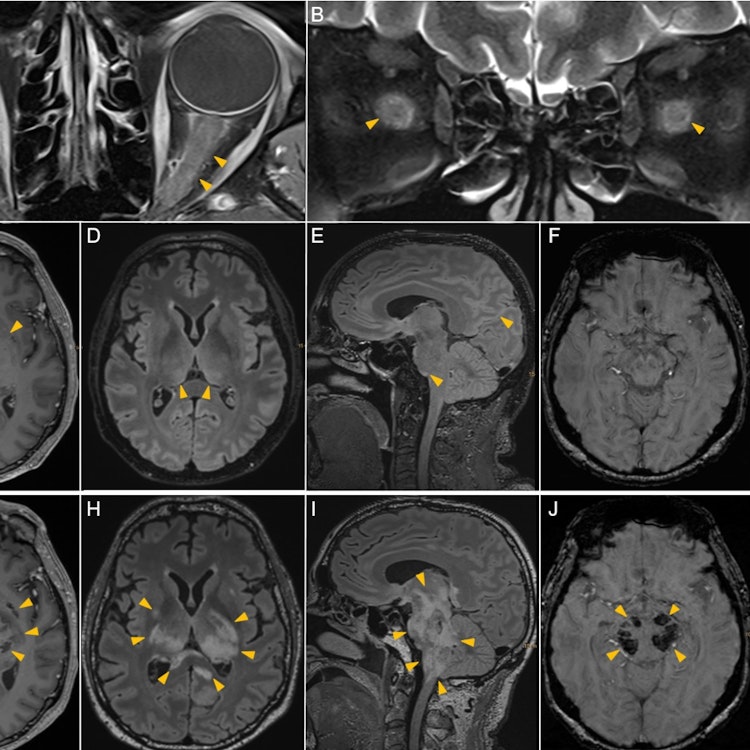
Acute haemorrhagic leucoencephalitis as clinical manifestation of MOG antibody-associated disease
Dear Editor, We read with interest the recently published article ‘MOG antibody-associated encephalitis in adult: clinical phenotypes and outcomes’ by Lee et al.1 The authors illustrate three core disease phenotypes consisting of cortical encephalitis, limbic encephalitis and acute disseminated encephalomyelitis (ADEM), showing good response to immunosuppressive treatment and positive long-term outcomes. However, we would like to raise attention towards an emerging MOG antibody-associated clinical presentation characterised by a highly aggressive disease course with unfavourable prognosis suggestive for acute haemorrhagic leucoencephalitis (AHLE). MOG antibody-associated disease (MOGAD) is a recently described autoimmune disease of the central nervous system. Accumulating evidence suggests that MOGAD has a remarkably heterogeneous spectrum. Besides cases of cerebellitis and autoimmune encephalitis, also a syndrome of encephalitis with steroid-responsive seizures, so-called FLAMES (FLAIR-hyperintense lesions in anti-MOG-associated encephalitis with seizures), is now recognised to be a specific feature of MOGAD. Interestingly, MOGAD can present with a monophasic clinical course in 50% of cases, which sets it clearly apart from multiple sclerosis and neuromyelitis optica spectrum diseases (NMOSD).
Download
skarsta-2023.pdfResearchers



